
Krylon Spray Paint
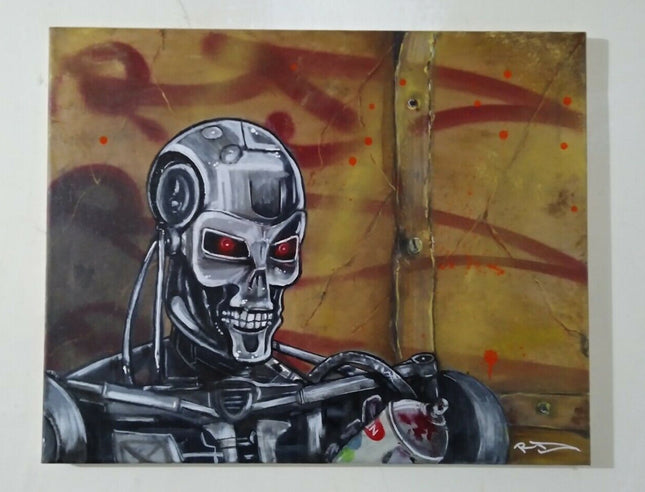
RD-357 Real Deal Terminator Examining Old Krylon Can Original Acrylic Spray Paint Painting by RD-357 Real Deal
Terminator Examining Old Krylon Can Original One of a Kind Acrylic/Spray Paint Painting Artwork on Stretched Canvas by Popular Street Graffiti Artist RD-357. 16”x20” Inch Canvas With a Cool Detailed Painting of a Terminator From the Movie Franchise the Terminator Is Examining a Old Krylon Spray Paint Can Left Behind by Rd357 All Hand Painted by rd357 a True Graffiti Writer Who Has Out Lasted the Rest in the NYC Graffiti Racket Nick Naming Him ‘’’The Last Man Standing ‘’’’’From His Era’ By Rd #357 Rd Is the Real Deal He Has Been a Graffiti Writer for Over 40 Years Starting on the Irt Subway Trains of New York City Rd Has Graffiti Tags in Many Many Movies & TV Shows & Books Filmed in New York City (Film Documented Proof) Stretching Out Threw the 38 Years.
$1,134.00
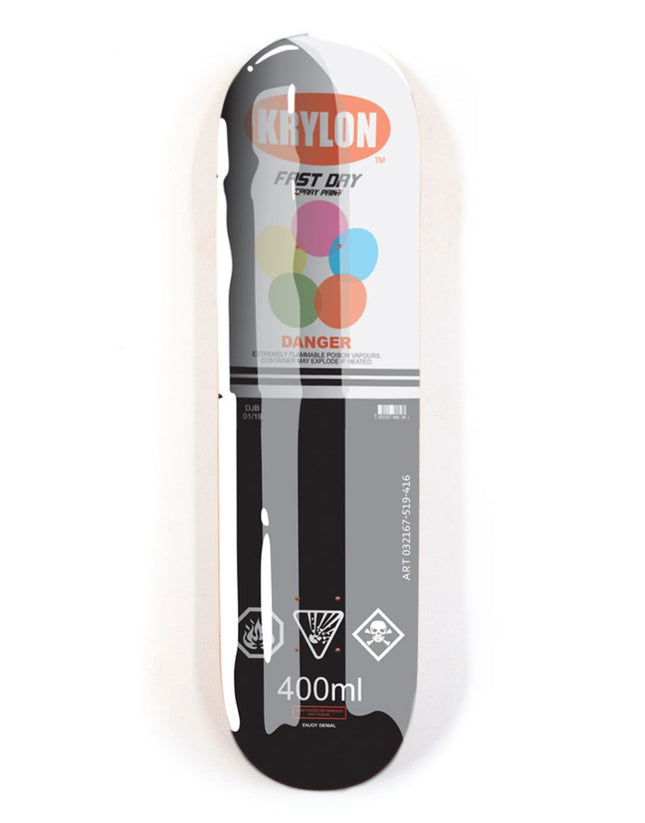
Denial- Daniel Bombardier Krylon Deck Archival Skateboard Deck by Denial- Daniel Bombardier
Krylon Deck Fine Art Limited Edition Archival Pigment Print Transfer on Cold Pressed Steep Natural Skateboard Deck by Street Artwork Graffiti Artist Denial. 2020 Signed COA Limited Edition of 50 Artwork Size 8x31.875 Archival Pigment Print Transfer on Cold Pressed Steep Natural Skate Deck Size: 8 x 31.875 Inches Release: July 18, 2019 Essentially, Denial is satirizing the reality, which both he and us are experiencing, through some of the Western culture’s most emblematic symbols. Denial is utilizing cultural products with the intention to make a statement against the system, which gave birth to them. As a result, he re-contextualizes them and transforms them from commercial products to his cultural legacy.
$431.00
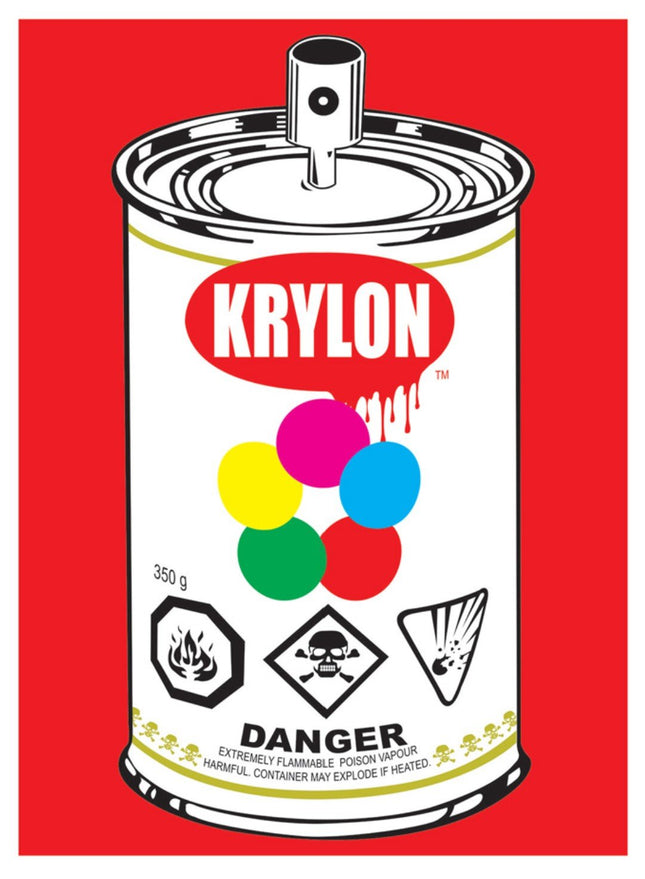
Denial- Daniel Bombardier Pop Can Red PP Silkscreen Print by Denial- Daniel Bombardier
Pop Can- Red PP Printers Proof 7-Color Hand-Pulled Limited Edition Silkscreen Print on Fine Art Paper by Denial Rare Street Art Famous Pop Artwork Artist. PP Printers Proof 2019 Signed Limited Edition Artwork Size 18x24 Signed & Numbered 2019 7-Color Screen Print on Fine Art Paper Size: 18 x 24 Inches Release: November 30, 2019 PP Printers Proof Denial is aware of his choices and motivations: “I like to think of myself as activist pop art. How I relate with cartoons and graphics is a lot easier than I do with photo-realistic stuff. I love referencing things that people are so familiar with. With humor and nostalgia, you can open up communication. I’ve done that for years, used elements of humor and familiarity to open a dialogue because then you can slide in some real issues and different things you’re trying to convey in your work. You have a lot more open stream to the person’s consciousness and experience towards how they’re taking your art. If you can get them to laugh at it, remember something or relate to some image.
$422.00
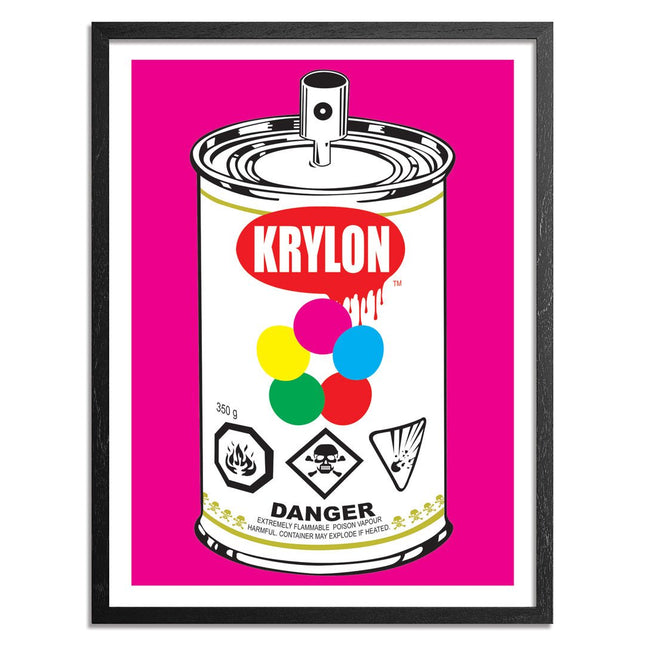
Denial- Daniel Bombardier Pop Can Pink Silkscreen Print by Denial- Daniel Bombardier
Pop Can- Pink Limited Edition 7-Color Hand-Pulled Silkscreen Print on Fine Art Paper by Denial Graffiti Street Artist Modern Pop Art. 2020 Signed Limited Edition of 40 Artwork Size 18x24 In 2000 he adopted the moniker ‘DENIAL’ as a means of poking fun at advertising, politics, and media messages that contemporary society is often ‘in denial’ about. Denial is a Canadian artist who experiments with aerosol and stencil art, while his main fields of interest are consumerism, politics and the human condition in today’s society. Since the culture of graffiti was gaining more and more popularity in the US and Europe, the taggers had to be increasingly original in order to stand out. The signatures became bigger, more stylized and more colorful.
$422.00
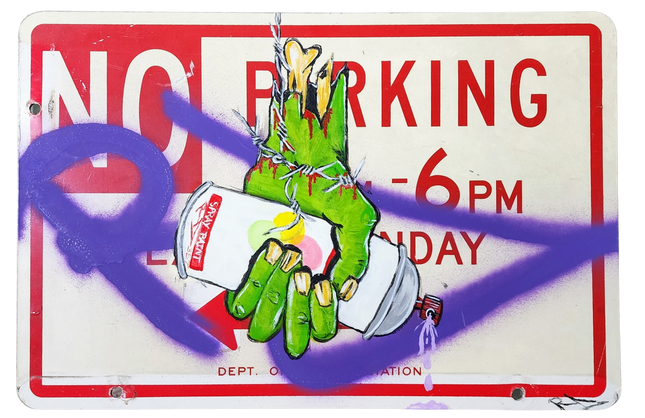
RD-357 Real Deal Zombie Hand Tag Original Street Sign Painting by RD-357 Real Deal
Zombie Hand Tag Original Street Sign Painting by RD-357 Real Deal Spray Paint Mixed Media One of a Kind of Artwork on New York City No Parking Notice Sign Pop Graffiti Street Art Artwork. 2014 Signed Spray Painting Original Artwork on Real NYC Reclaimed No Parking Metal Urban City Street Sign Size 18x12 of a Decapitated Zombie Hand Grasping & Spraying a Can of Krylon Spray Paint with the RD Tag in Purple. RD-357's Vivid Depiction of Urban Rebellion: The Zombie Hand Tag The 'Zombie Hand Tag' original street sign painting by RD-357, also known as Real Deal, is a provocative piece of street pop art and graffiti that embodies the rebellious spirit of urban street culture. Completed in 2014, this artwork uses a New York City 'No Parking' metal sign as its canvas, transforming a mundane object of urban regulation into a striking visual statement. The depiction of a decapitated zombie hand grasping and actively using a can of Krylon spray paint infuses the piece with a sense of post-apocalyptic creativity and survival. Interpreting the Symbolism in RD-357's Art This piece is rich with symbolism that resonates with the ethos of graffiti and street pop art. The zombie hand, often a symbol of horror and the macabre, is presented here as a vessel of artistic creation, subverting its usual connotations of death and decay. By wielding a can of Krylon, the hand breathes life into an art form that thrives on the fringes of society. The RD tag in purple spray paint marks the artist's signature and serves as an act of claiming territory, a fundamental aspect of graffiti culture. The choice of a 'No Parking' sign as the medium is deliberate and insightful. It represents the restrictions and boundaries imposed by society, which street art often aims to transgress. The act of a zombie hand, a symbol of defiance against mortality, spraying over such a sign is a metaphor for the resilience of street art. It refuses to be confined or controlled, much like the undead refusing to remain in the grave. The Aesthetics and Technique in RD-357's Zombie Hand Tag RD-357's technique in creating this piece highlights street art's raw and unapologetic beauty. The artwork, measuring 18x12 inches, showcases the artist's skill in manipulating spray paint, a medium often dismissed by the traditional art world but revered in street culture. The dripping paint from the Krylon can, the textured portrayal of the zombie flesh, and the striking contrast between the hand and the sterile sign it occupies all contribute to a composition that is as much a visual triumph as a statement piece. The use of mixed media, incorporating both the physical sign and the spray paint, reflects the layered nature of street art. It is both an object and a message, a tangible piece of the city's fabric and a commentary. The artwork challenges viewers to see beyond the surface to understand the depth and complexity of the messages conveyed through this unique artistic expression. Conclusion: The Cultural Impact of RD-357's Work The 'Zombie Hand Tag' is a potent example of how street pop art and graffiti can alter perceptions and engage with viewers on a visceral level. RD-357's work demonstrates street art's transformative power, which can turn a simple traffic sign into a thought-provoking piece that questions authority and celebrates the irrepressible nature of human creativity, even in the face of societal collapse. RD-357, whose real name and country of origin remain unknown, much like the enigmatic nature of street art itself, has created a piece that stands as a testament to the enduring spirit of street pop art and graffiti. The 'Zombie Hand Tag' is a visual spectacle and a narrative of resistance, a declaration that even in a world overrun by the metaphorical zombies of conformity and control, the artist's spirit remains unvanquished.
$600.00






